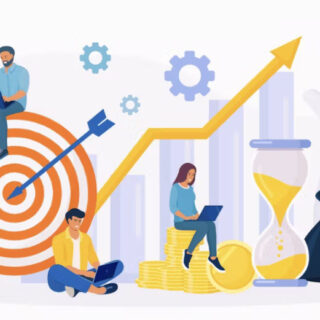
 As a seasoned leader, you most likely know how to plan and implement strategic change, organizational transformation or product innovation. But, what if in all that planning, the human factor — how the people conduct themselves around your planned initiatives — just absolutely does not fulfill your expectations?
As a seasoned leader, you most likely know how to plan and implement strategic change, organizational transformation or product innovation. But, what if in all that planning, the human factor — how the people conduct themselves around your planned initiatives — just absolutely does not fulfill your expectations?
Successful change builds upon altered behavior. Therefore, your change strategy should include a solid plan for how to empower people to change their behavior.
For people to adopt new behavior, three factors are paramount:
- The members of your organization have to associate positive emotions with the change outcome and involved procedures.
- They have to be invested in the process.
- They need to recognize the changes as an inspiring challenge.
Now, what does that mean for your daily practice?
Factor 1: Associate positive emotions with the change outcome and involved procedures
- Start with yourself! Understand that your job is to lead people through change and to embrace innovation. In order to succeed, you need to develop a positive attitude around the entire change process – which includes all the ups and downs that will undoubtedly be ahead of you and your group – not just the desired end result.
- Identify what the true desired end result is. Write the result down and say it out loud: If you can say it in one short sentence, chances are you are clear on what you want to achieve. If your sentence has more than one sub-clause or comes out as a run-on, you may have to go back to the drawing board for your change initiative.
- Put yourself in your employees or customers shoes! Try to sympathize with what you are asking your customers or employees to go through as they go implement a change initiative, new goal, or new product.
- Find out what motivates your people! To help people become enthusiastic about all phases of the journey ahead, you need to know what truly motivates them. For example, identify what helped your employees do an outstanding job in the old setting or what made your customers use your previous product instead of that of a competitor.
- Develop a change or innovation strategy that incorporates your findings. Once you have found out what your customers or employees are going through and what motivates them, incorporate the findings into your change strategy. Again, no picking and choosing — account for all findings.
- Find smart ways of communicating the end result and be realistic about the potentially bumpy road of getting there. A smart way to communicate the good with the not so good is to address the motivational factors and needs of your target group in ways that engage them and hook them into process.
Factor 2: Actively engage people in the process
- Ask your customers or employees about their needs – This step kills two birds with one stone: You will collect a tremendous amount of data and reduce your own blind spot. And second, there is no better way to engage your target group in the process than by asking them to communicate their needs.
- Even better: Involve your employees in the design phase of your change or innovation strategy. Many organizations argue that this cannot be done in their setting: They think they are too small, too big, too international, too local, too progressive, too conservative, simply too… whatever else might spring to mind. Fact is, though, that collaborative change and innovation design has been done successfully in organizations around the world in every industry. And the success rate is often higher than in standard settings. Often times, during this process of active engagement, people automatically adopt new behavior as they go. So all in all there are too many good factors to not consider the procedure for your own organization.
- Create Think Tanks and support groups around your process – and make time for them to take place in a fun and creative way. You may think that you do not have the time, nor the money, nor the right mindset to do this in your organization, but again, it is during this active engagement that true behavior change takes place. One might easily counter-argue that you do not have the time or the money NOT to try it.
- Think outside the box when appointing change and innovation leaders! Working with your “line leaders” to design and implement organizational change or a product innovation strategy is standard in many organizations. But think about all the engagement and creativity you could set loose by not just following the most obvious line of hierarchy. How about recruiting people who are interested in navigating the change process from the actual target group? Or have rotating roles in this?
Factor 3: Helping people to see the change as a stimulating challenge
- Think big around the possible outcome! If the outcome of your change or innovation process isn’t going to be really great, why go through with it? Allow yourself to think big about what is possible and always remember: Together you can achieve much more than alone.
- Break the audacious outcome into manageable but bold steps. While the big target often seems unmanageable, you can get there step by step.
- Develop prototypes together and discuss them regularly. Prototypes help foreshadow what it would really be like to work under the new conditions. This approach helps people to slowly get used to what’s ahead and to make the necessary adjustments as they go.
- Establish a can-do attitude among your group and within yourself. Re-frame your thoughts around what is possible during this process and be understanding in the moments when you or others may have doubts.
- Cultivate positive, realistic and honest language within your organization, in your environment and around your product or initiative. Honesty and realistic language can create a truly positive attitude. Positive language that is not grounded in reality often achieves the opposite results.
Last: Celebrate your successes; celebrate them loud and clear and celebrate them together!
Erika Jacobi is the President of LC GLOBAL Consulting Inc., a boutique consulting firm with offices in New York City and Munich, Germany. LC GLOBAL® leads organizations through important change and innovation processes to pave the way for unique transformation and sustainable growth. For more information visit www.lc-global-us.com or follow us on Twitter at https://twitter.com/LC_GLOBAL.











